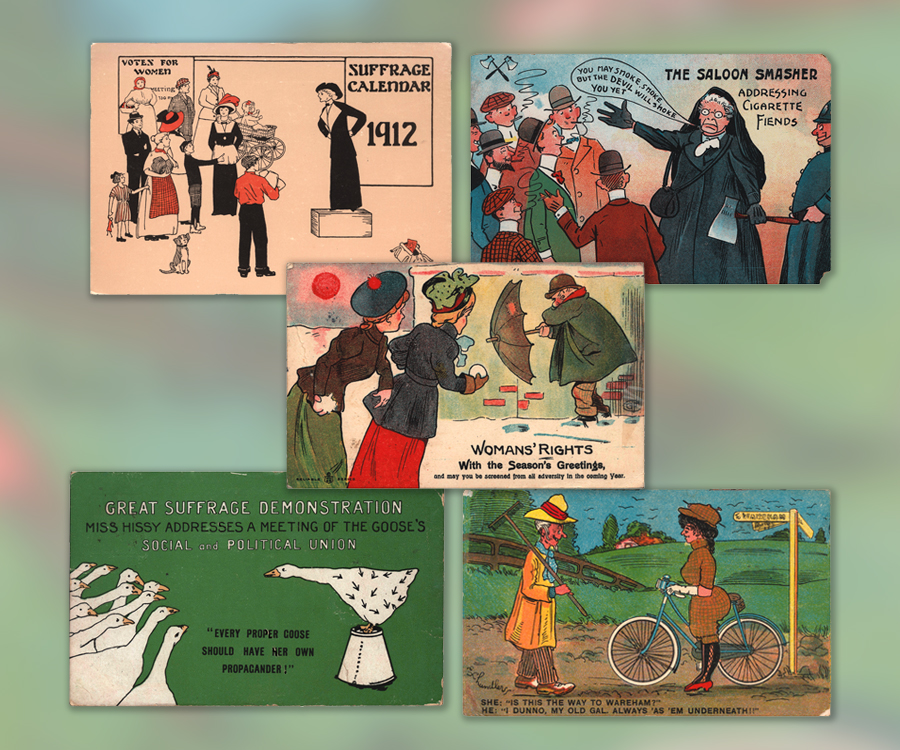If USPS is the original social network, then postcards might be considered the first tweets.
And just as today’s activists use Twitter to promote their favorite causes, advocates for women voting — called suffragists — used postcards to make their case more than a century ago.
“Suffrage was the first movement that was able to capitalize on postcards,” said Carol Crossed, author of “Vintage Tweets: Suffrage Era Postcards,” a new book that uses historical mailpieces to chronicle the history of women’s voting rights.
“The heyday of the postcard was between 1890 and 1930,” Crossed said. “Right smack in the middle of that was suffrage. No other movement was as centered in the period as suffrage was.”
Among other topics, the book examines how postcards with pro-suffrage messages helped fund the movement.
“They were sold on street corners by the National American Woman Suffrage Association. They had little booths. Women liked to collect them,” said Crossed, who has more than 650 such postcards in her collection.
“Vintage Tweets” also explains how pro-suffrage postcards relied on images of children and animals because they were innocent and non-threatening. Opponents of women voting soon followed the suffragists’ lead and came up with their own postcards that were often colorful and entertaining, although the imagery was hostile.
“They showed women muzzled, or a vice on a woman’s mouth,” Crossed said. “They showed unattractive, heavy women. There were some that really go over the edge.”
The women’s suffrage movement ended Aug. 26, 1920, with the adoption of the 19th Amendment, which prohibits states and the federal government from denying U.S. citizens the right to vote on the basis of sex.
The Postal Service plans to commemorate the amendment with a stamp this year.
In the meantime, Crossed’s book has received praise for showcasing the enduring power of mail as a communications platform.
“‘Vintage Tweets’ honestly highlights how a cause or fight can be achieved without violence,” wrote Chris Podzuweit, executive director of the Seneca Falls Historical Society, in a statement on Crossed’s website. “It is as relevant today as then.”
